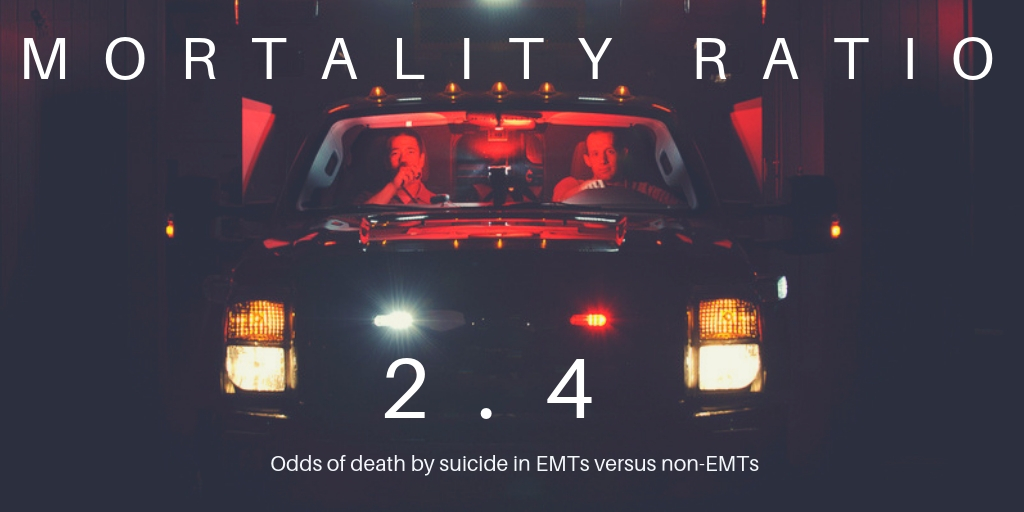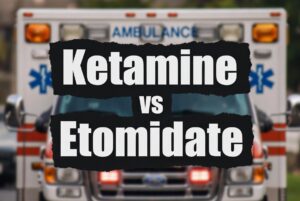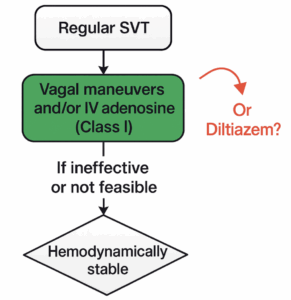Death by Suicide — The EMS Profession Compared to the General Public
Background & Objectives:
Suicide is a public health crisis with an estimate 45,000 individuals dying from suicide annually. Certain professions, including law enforcement and EMS are exposed to high degrees of workplace stress, therefore it is hypothesized that these individuals are more predisposed to conditions including anxiety, depression and suicidal ideation and behaviors. Survey data examined by the National Association of Emergency Medical Technicians (NAEMT) has indicated that there is very high occurrence of suicidal ideation within the EMS community. Despite this important information, the relationship between suicidal ideation and suicide attempt with the completion of suicide in EMS providers has not been well studied. The authors of this study aimed to assess the odds of death by suicide completion in EMTs compared to non-EMTs.
Methods:
The investigators conducted a retrospective case-control study that analyzed the electronic death registry in Arizona from January 2009 to December 2015. Only adults greater than or equal to the age of 18 were included in the analysis. Multiple variables from the death registry were examined including age gender, race, ethnicity, and most importantly for the purposes of this study: cause of death and occupation. With respect to occupation, the term “EMT” was categorized as all individuals who had EMT certification, including firefighters, EMTs and paramedics. A logistic regression model was implemented to calculate the mortality odds ratio (MOR) of suicide between EMTs (exposed group) and non-EMTs (non-exposed group).
Key Results:
In total, 350,998 adults were analyzed who died during the above time period. The key results from the study were as follows:
· There were 1,205 EMT deaths during the study period
o 63 (5.2%) were attributed to suicide. This is compared to the non-EMT group of which 2.2% of deaths were due to suicide.
· MOR for EMTs versus non-EMTs was 2.45; [95% CI (1.88-3.13)]
· Adjusted MOR for EMTs versus non-EMTs was 1.29; [95% CI (1.06-1.82)] adjusted for gender, age, race and ethnicity

· The most common mechanisms of suicide in the EMT group was firearm (67%), however there was no significant difference between death by firearm in the EMT cohort versus the non-EMT cohort.
Takeaways:
· In the Arizona electronic death registry, there were higher odds for death by suicide in EMTs compared to the general public.
What this means for EMS:
EMS providers are faced with significant workplace stressors. Whether it’s traumatic calls, poor sleep quality, poor compensation, long hours, or overall low job satisfaction, EMS remains one of the most challenging professions. These aspects of the EMS profession, unfortunately, contribute to a host of mental health issues including depression, anxiety, PTSD, all of which predispose individuals to developing suicidal ideation and behaviors. The time to act is now. The results of this study are extremely compelling and must serve as the impetus for change within the profession. Further studies that precisely characterize the risk factors that place EMS providers at higher risk than the general public should be examined as well. Despite this, the findings from this research still demonstrate the need for greater EMS education regarding the symptoms and warning signs of suicidal behavior, the importance of adequate resources for counseling and mental health, and improved work conditions to protect those individuals who protect our communities and our patients.
Article Reviewed by Article Bites Editor Al Lulla, MD.



